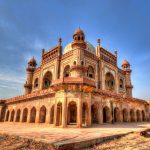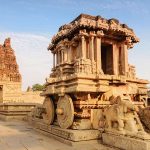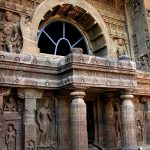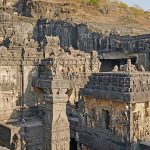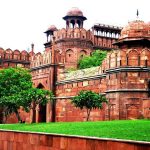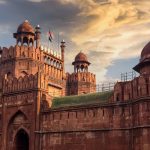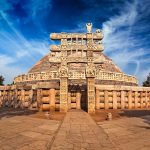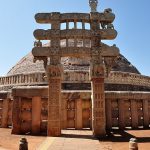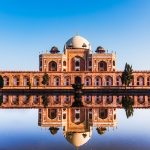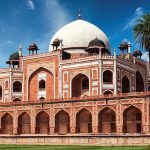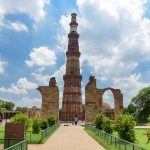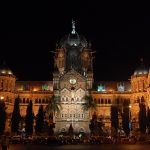World Heritage Sites in India – India is a multi-diversity country rich in religious, cultural, and regional backgrounds. The subcontinent is where one can experience much diversity even within a small range of distance. A land of historically rich and architecturally abundant places, India boasts around 40 of its heritage sites on the UNESCO World Heritage Site list making it the sixth position holder in the world when it comes to preserving the legacy of remarkable natural and cultural wonders.
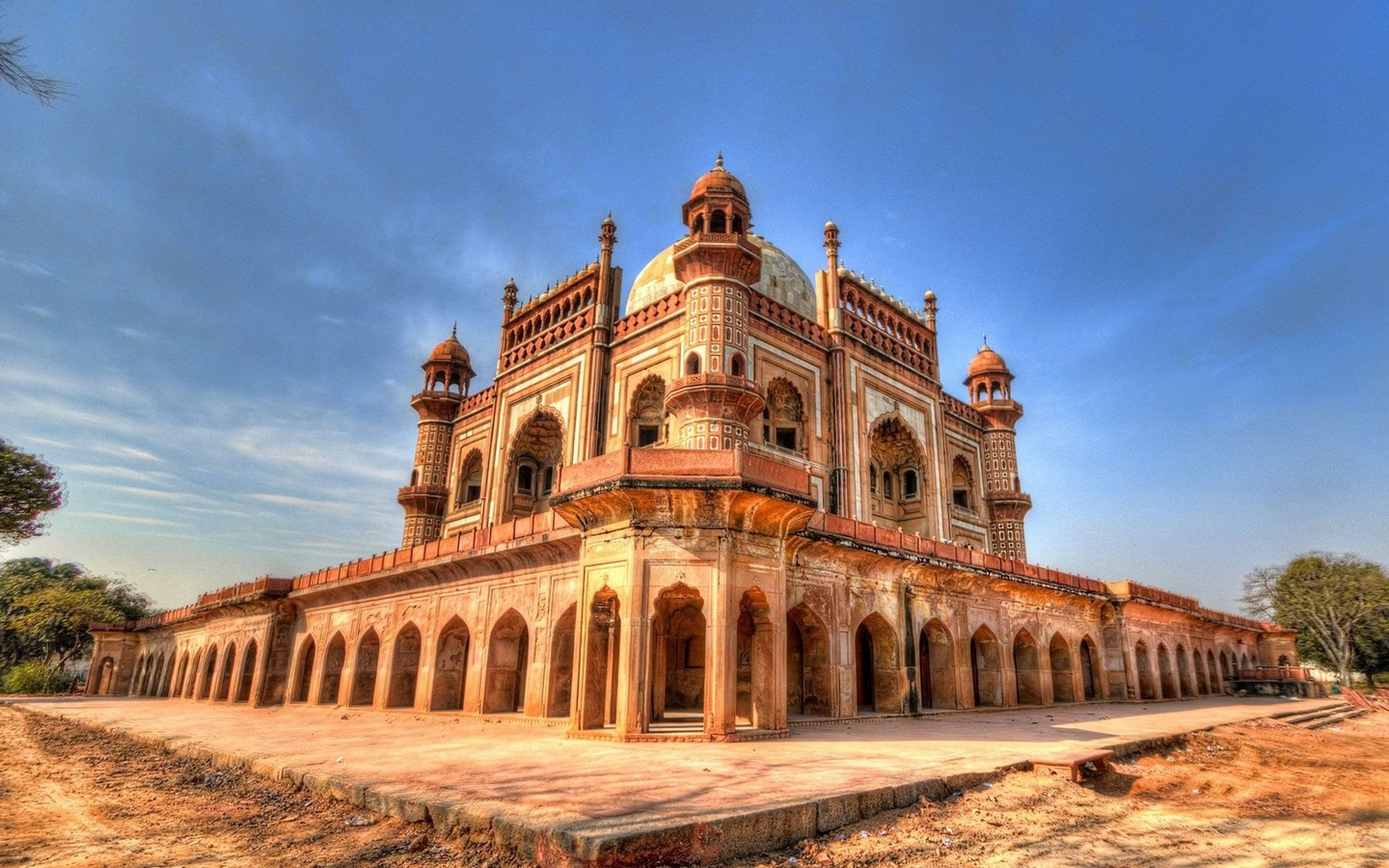
Let’s talk about ten of these architectural marvels one by one.
1. Taj Mahal, Agra | World Heritage Sites in India
Style: Mughal Architecture
Material: White Marble
Location: Dharmapuri, Forest Colony, Tajganj, Agra
Best Time to Visit: October to March
Listed in: 1983
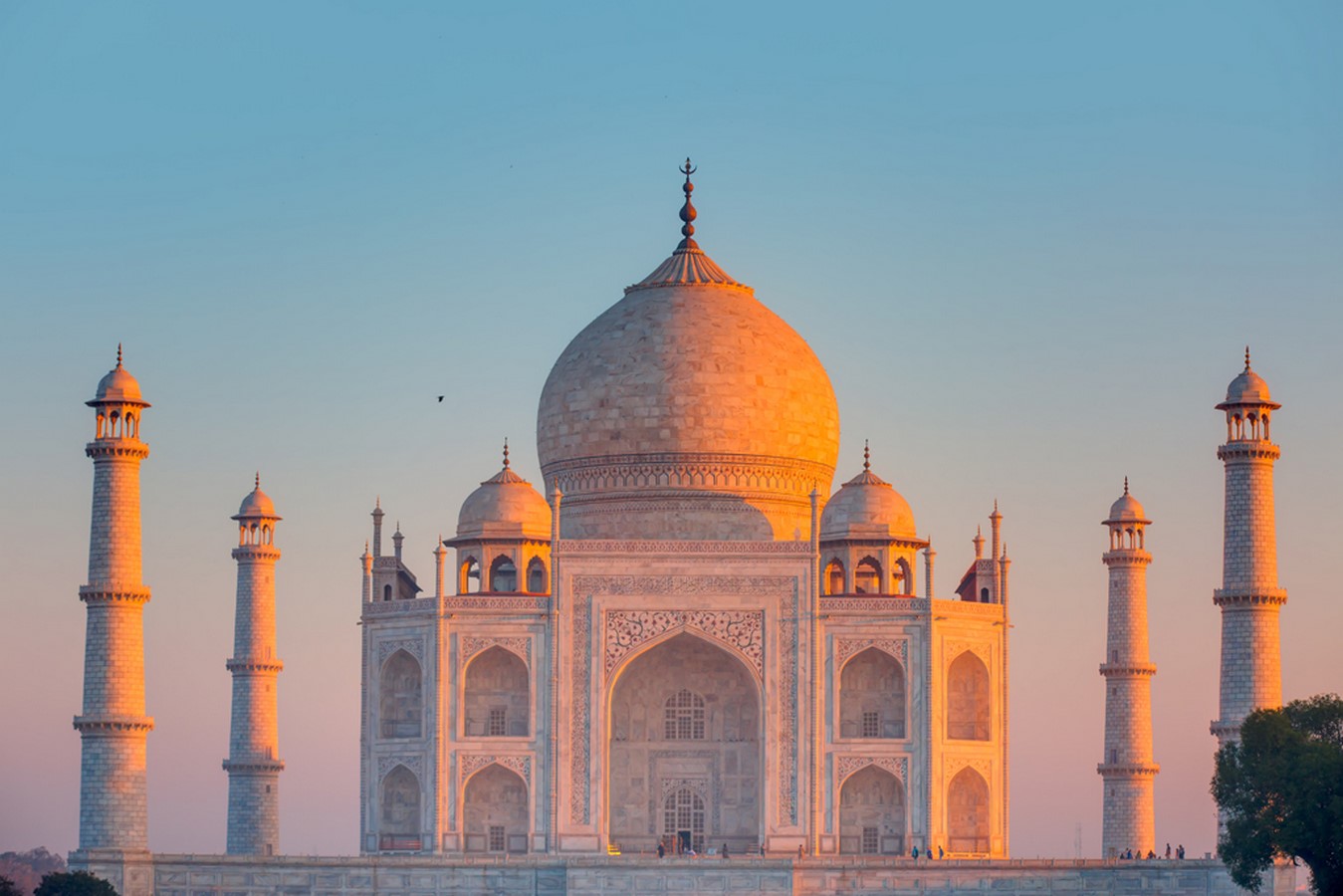
Let’s start with the one which is a renowned marvel all over the world due to its architectural beauty and brilliance i.e. Taj Mahal. One of the Seven Wonders of the World, the Taj Mahal being the White Marble Mausoleum-Mughal Architecture was declared a UNESCO World Heritage Site in 1983. The backstory of the Taj Mahal dates back to the 1600s; Built by Shah Jahan in the loving memory of his most beloved wife Mumtaz Mahal, it is a visual paradise on earth. Therefore, this marvel rightly justifies itself as being a heritage of Indian lands.
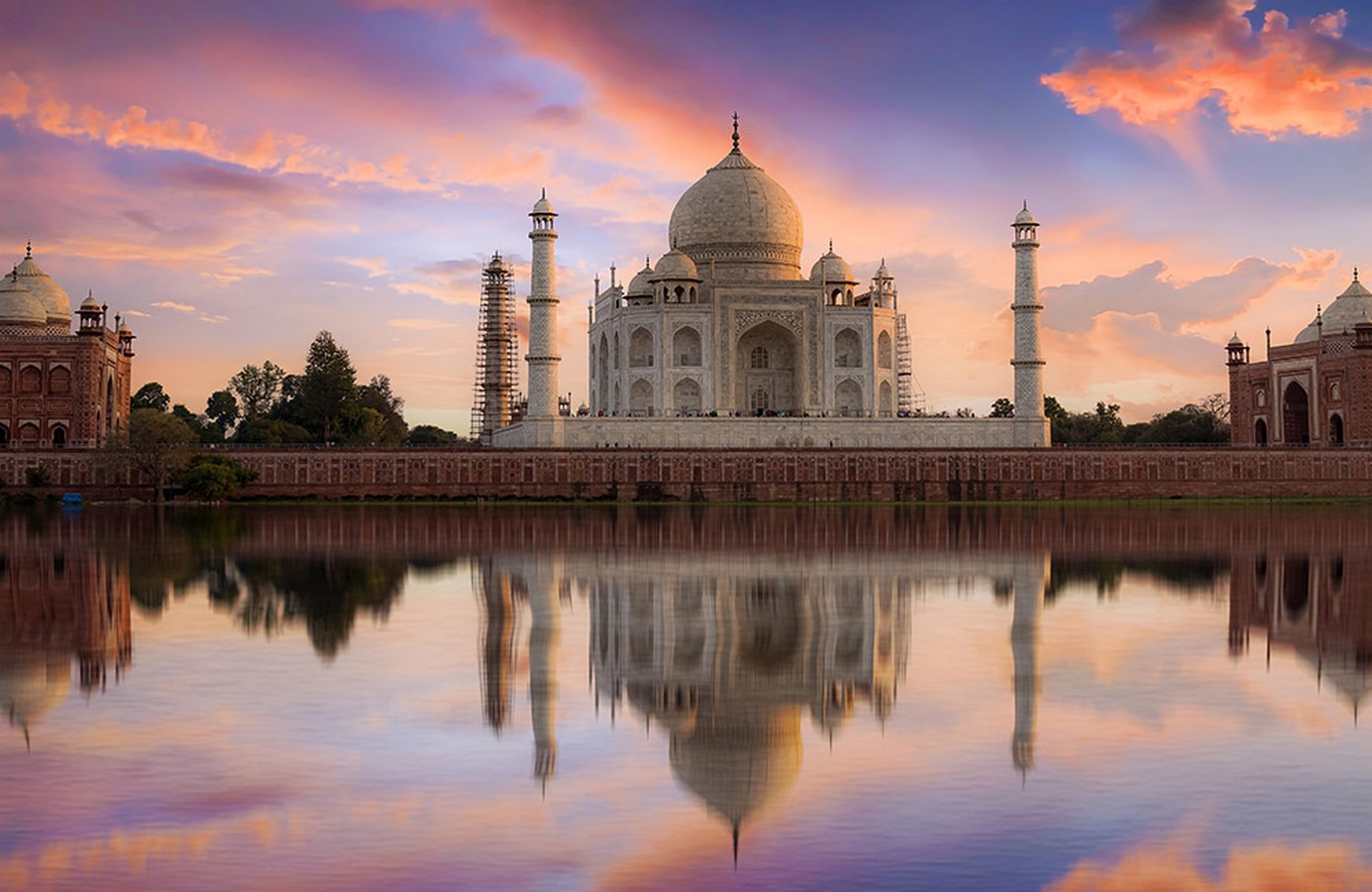
Standing tall amidst the city of Agra, the structure of the monument shines endlessly depicting its roots with Mughal Architecture along with touches of Indian, Persian, Islamic, and Arabic architectural styles. Other architectural elements include the water fountains within the beautiful Mughal Gardens, tall minarets, arch-shaped fenestrations and gateways, and embellishment of gemstones on walls and interiors. It houses a mausoleum, museum, and beautiful gardens for every range of people to thrive in.
2. Khajuraho, Madhya Pradesh
Style: Nagara Style Architecture
Material: Sandstone
Location: Chhatarpur, Madhya Pradesh
Best Time to Visit: October to March
Listed in: 1986
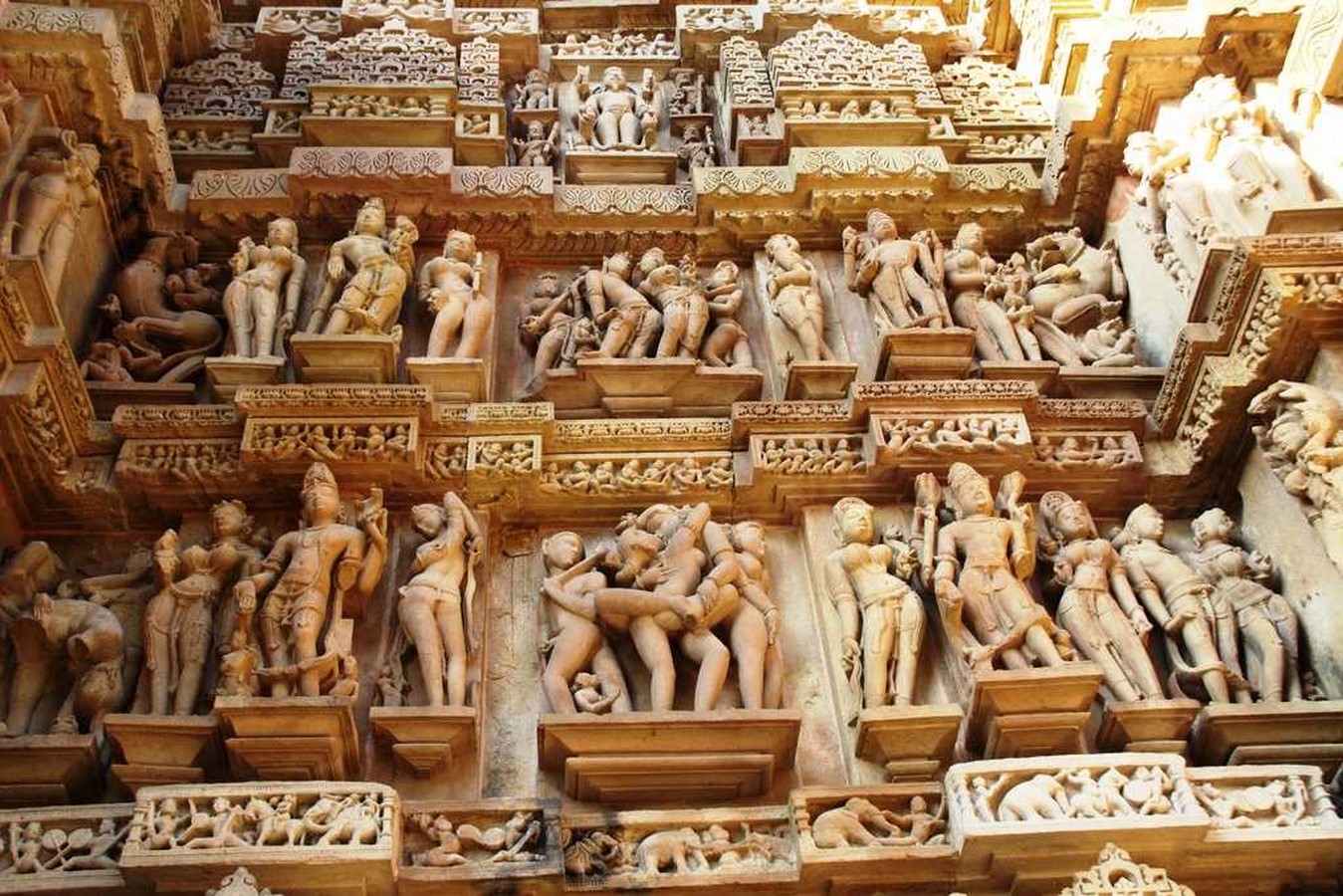
Being a unique monument in many aspects, Khajuraho made it to the list of UNESCO World Heritage Sites in India in 1986. It is located in Madhya Pradesh and is renowned for a multitude of Hindu and Jain temples. The structures were created in 950-1050 CE under the reign of the Chandela rulers. There were a total of around 85 temples over an area of 20 square kilometers in the 12th century out of which only 20 survived the wreckage of time.
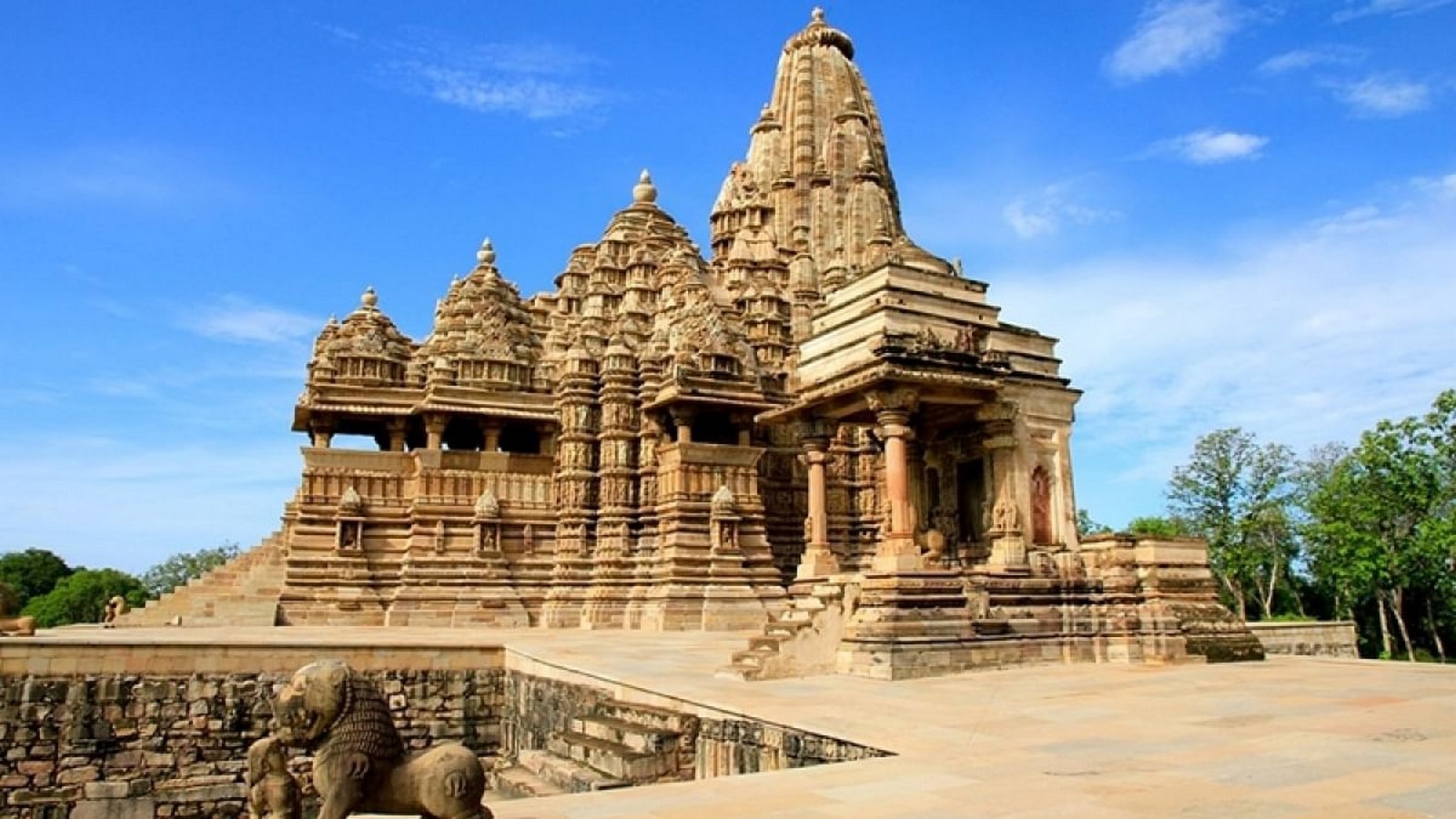
Boasting brilliant artistic pursuits in the area of Nagara style of architecture, they are particularly known for sensual erotic figurines and sculptures portraying dance, music, arts, and sensuality. Erotic sculptures take up only 10% of the carvings but the effect they leave on people lingers for a long time. One of the most prominent temples of all the structures in the Khajuraho complex is Kandariya Mahadev Temple. The structures are made of Sandstone in its most beautiful form and carvings. The complex houses many temples and museums portraying history from bygone eras and times.
3. Hampi, Karnataka | World Heritage Sites in India
Style: Dravidian style Architecture
Material: Granite, burnt bricks, and lime mortar
Location: Vijayanagar district, Karnataka
Best Time to Visit: October to February
Listed in: 1986
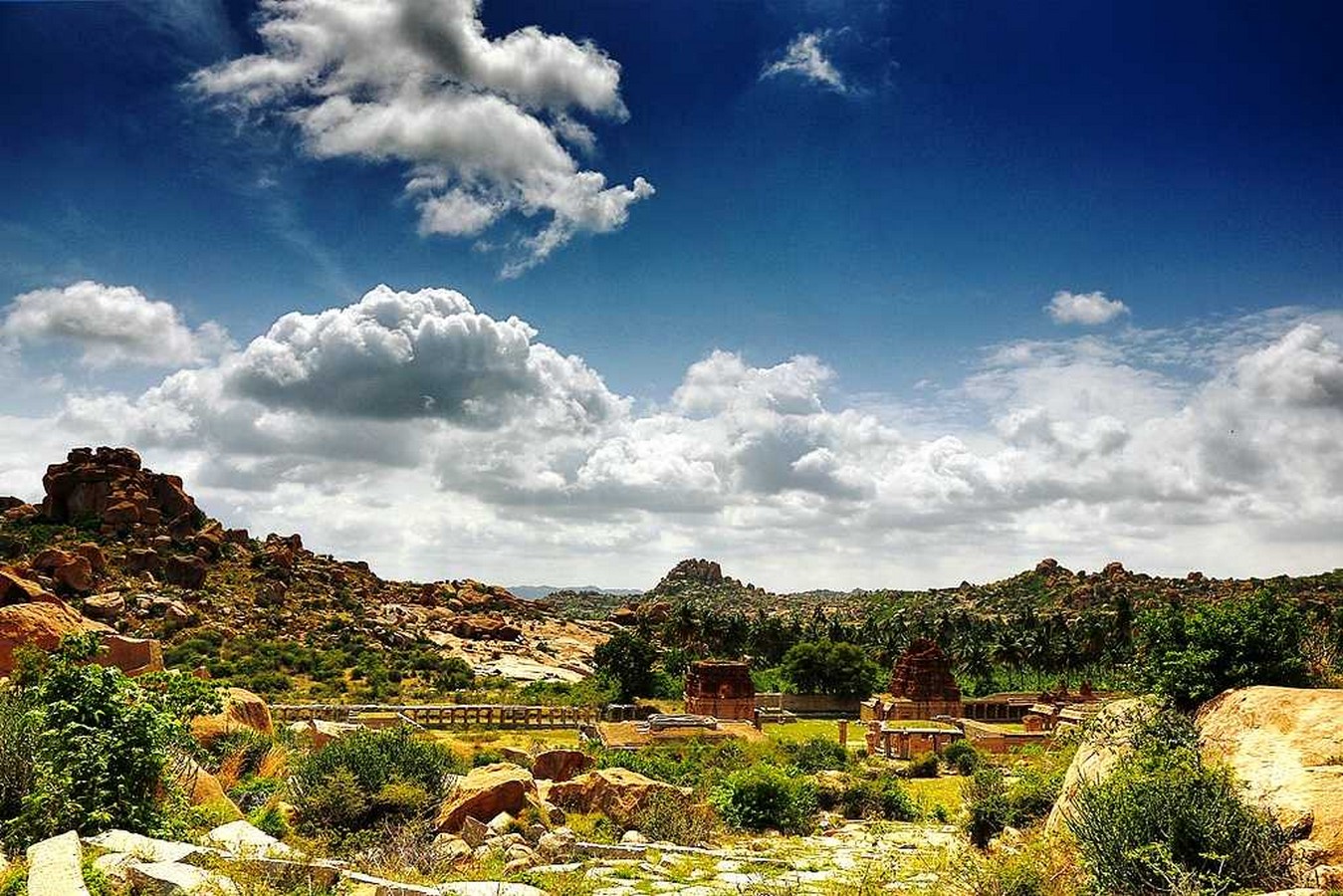
The city of Hampi is a living narrative of the times when the Vijayanagar kingdom was at its prime in the 14th century; Hampi was the capital city whose ruins attract history nerds and experts from all around the world. On account of a lot of aspects that make this ruin of a structure a heritage site, Hampi is a marvel from the southern bank of the Tungabhadra River in Karnataka. It has gone through the ravages of time but continues to be a significant religious center for Hindus and aspiring architects to witness this beauty.
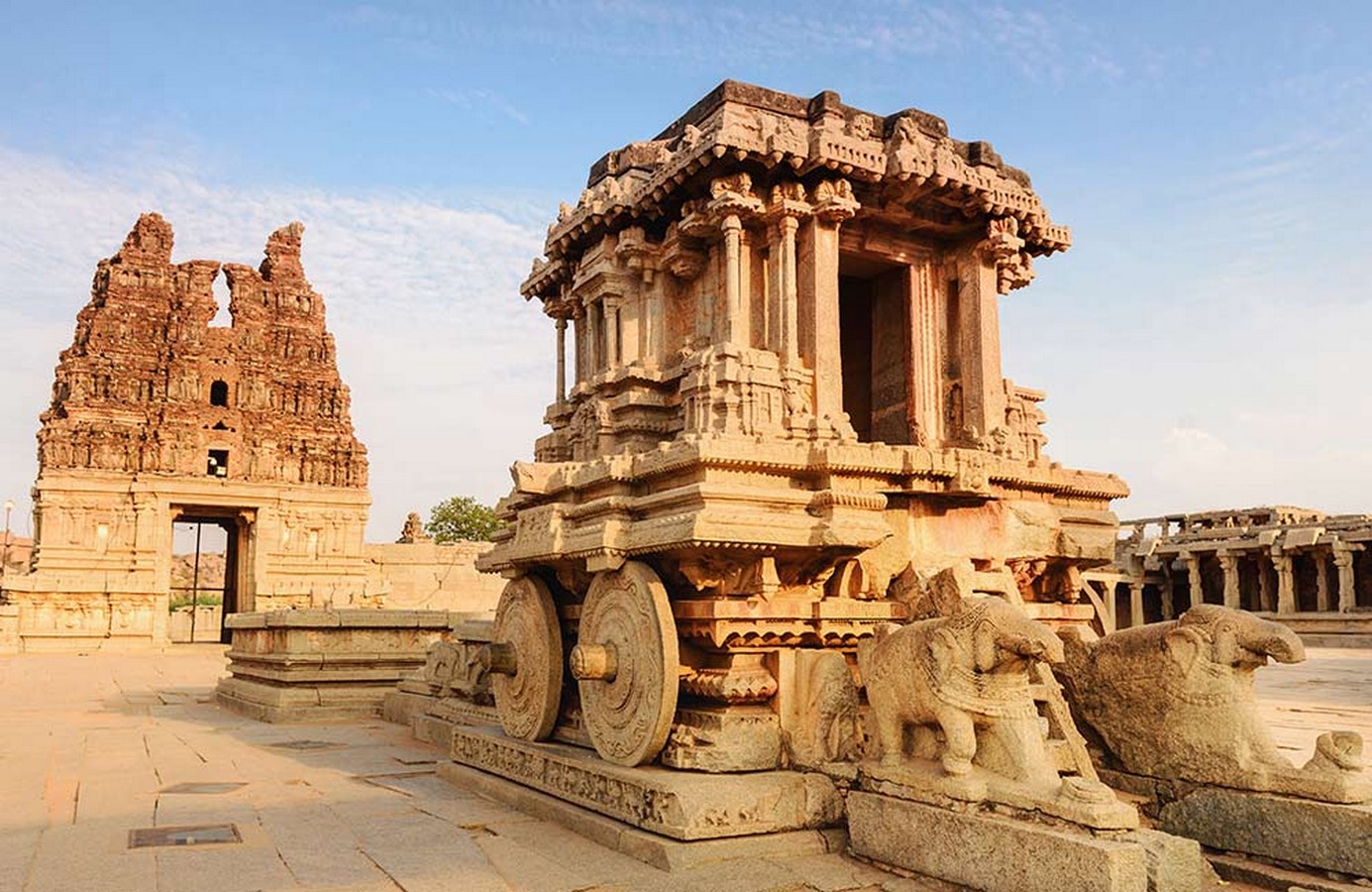
Declared a UNESCO World Heritage Site in India in 1986, Hampi ruins are a collection of 1600 heritage sites portraying the Dravidian style of art and architecture in the form of temples, shrines, gateways, forts, halls, museums, water structures, and more such structures. The most prominent one is the Virupaksha Temple, Hampi has several other monuments which are collectively called the ‘Group of Monuments at Hampi.’ The rest are the Vitthala temple complex, Pattabhirama temple complex, Lotus Mahal complex, Narasimha, Ganesa, Hemakuta group of temples, Achyutaraya temple complex, Krishna temple complex, several puras or bazaars surrounding the temple complex, and also living quarters and residential areas.
4. Ajanta Caves, Maharashtra
Style: Rock-cut Cave Monuments
Material: Igneous rocks plastered with clay, cow dung, and rice husks then coated with the lime paste.
Location: Near Jalgaon, Aurangabad district, Maharashtra
Best Time to Visit: October to March
Listed in: 1983
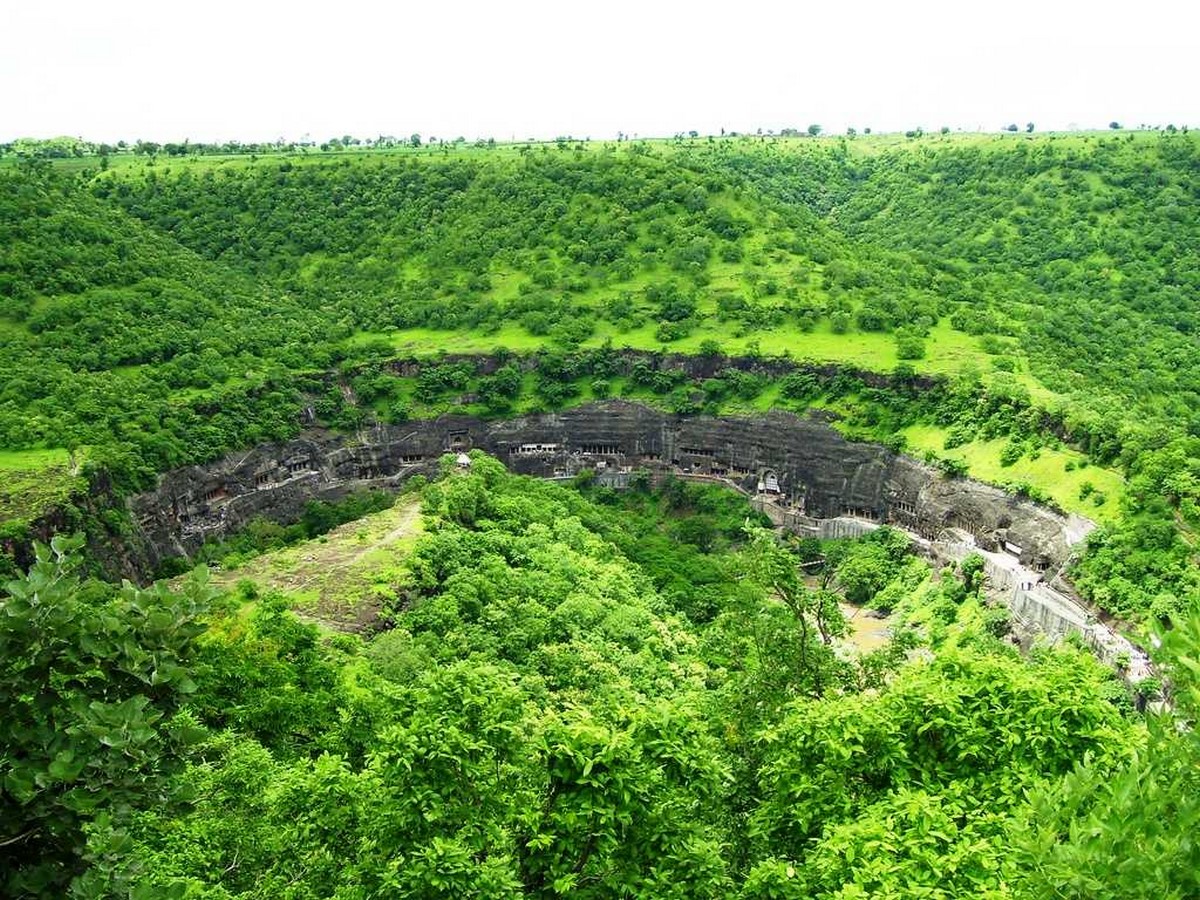
One of the oldest World Heritage sites of India, Ajanta Caves, dates back to somewhere between the 2nd century BCE and 650 CE. Being ASI guarded, they were declared UNESCO World Heritage Sites in India in 1983. Ajanta caves are known for their Buddhist Rock-cut Caves adorned with richly decorated paintings and beautiful frescoes just like Sigiriya Paintings. According to the tales, the caves were built in two very different phases; the first one being the Satavahana Period under the reign of the Satavahana Dynasty from 230 BCE to 220 CE and the second one being the Vakataka Period from 400 to 650 CE under the reign of Vakataka Dynasty ruled by Emperor Harisena.
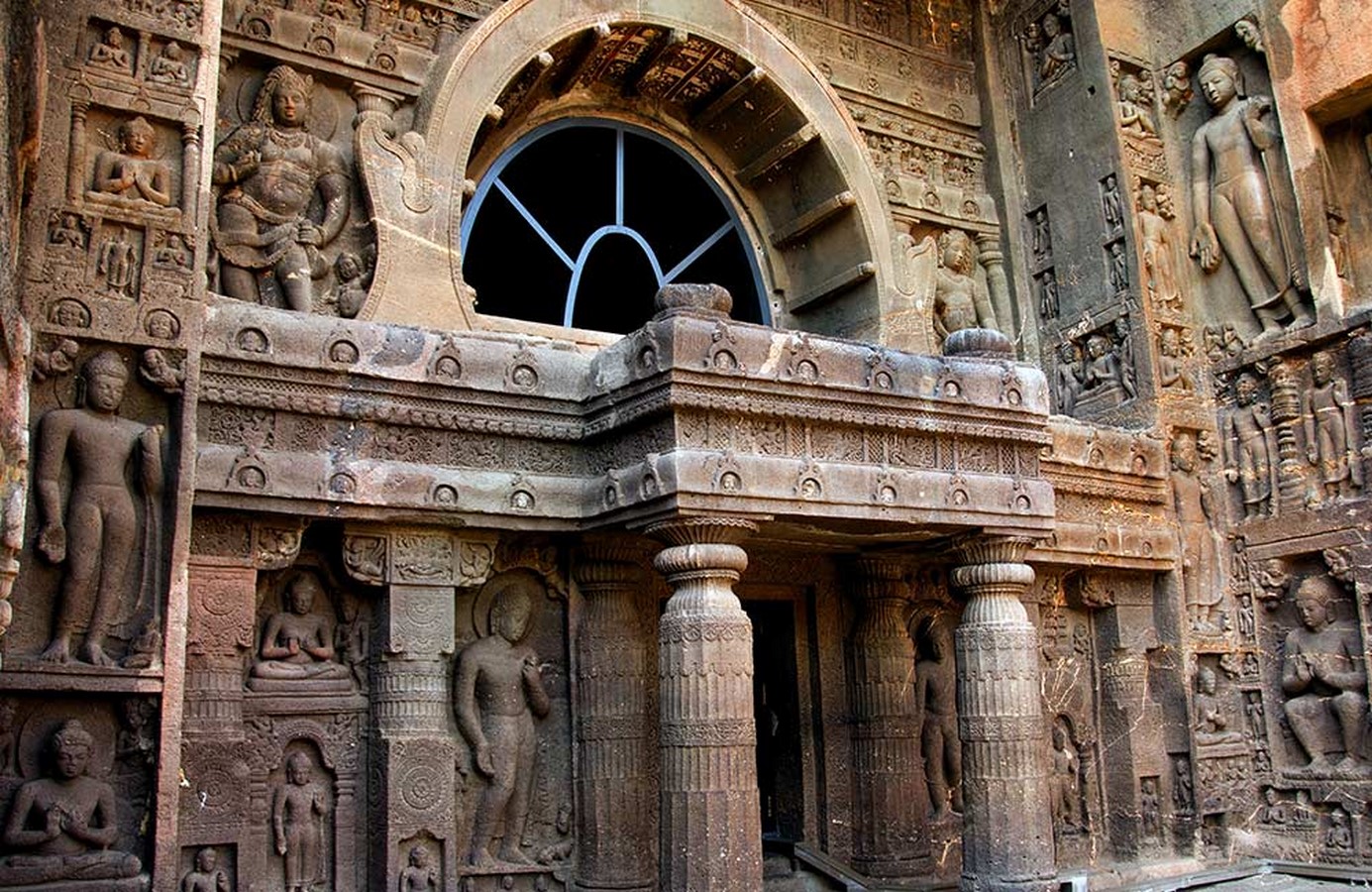
It consists of around 31 beautiful and narrative cave monuments, paintings, and sculptures. Ajanta art is a very important keystone on which the history of art and architecture in our country has been based and evolved from. The prominent cave is Cave 1 which houses a seated figure of Lord Buddha in dharma chakra pravartana mudra, Monastries, Chapels Bodhisattvas, Vajrapani, princesses, and murals portraying Sibo, Mahajanaka, etc.
5. Ellora Caves, Maharashtra | World Heritage Sites in India
Style: Rock-cut Architecture
Material: Volcanic Basalt rock
Location: Ellora Cave Road, Ellora, Maharashtra
Best Time to Visit: October to March
Listed in: 1983
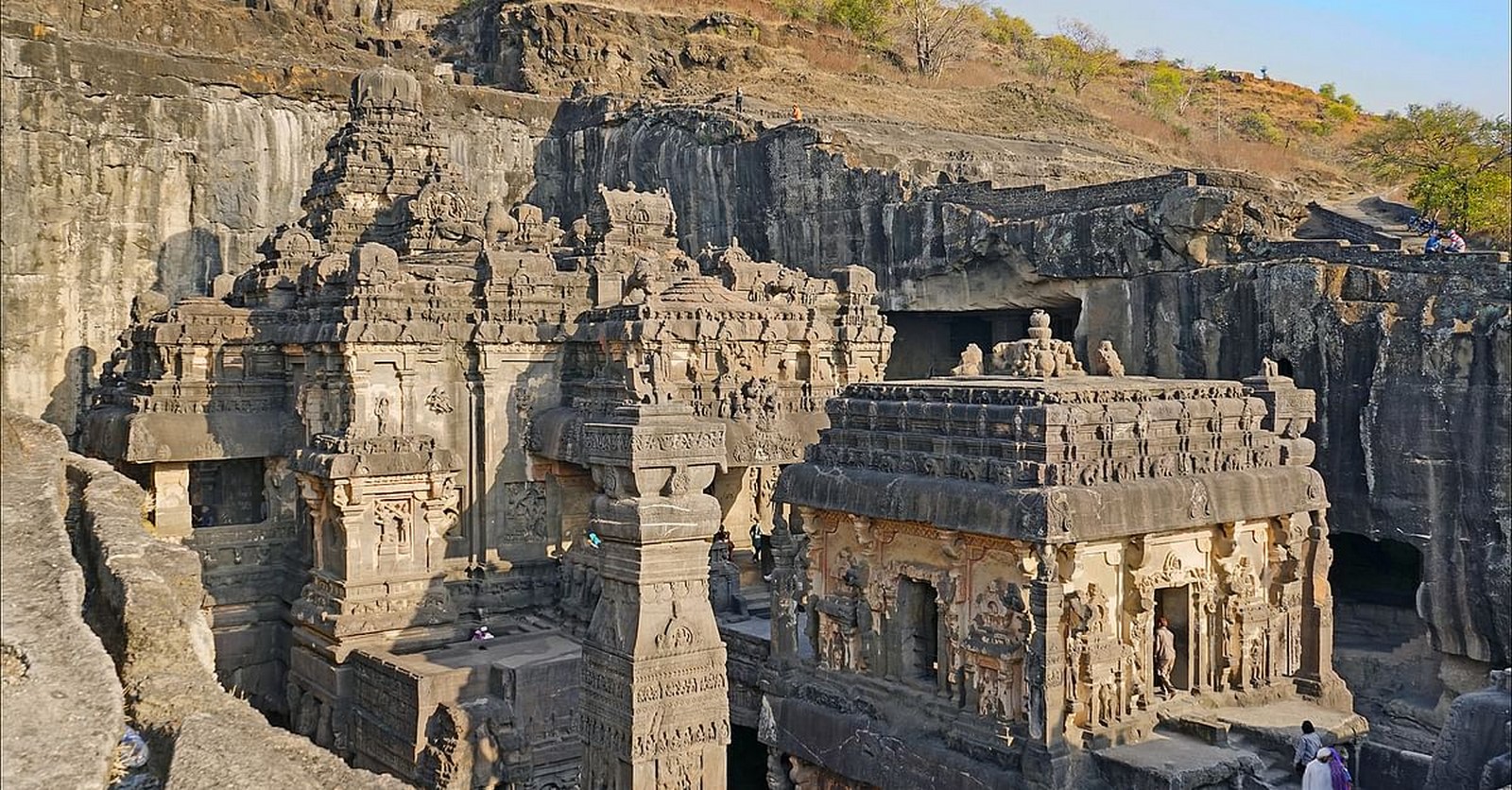
Declared UNESCO World Heritage Site in India in 1983, Ellora cave is a famous archaeological site in Aurangabad. It houses a sequence of Viharas, Maths, Hindu, Jain, and Buddhist monuments. The caves are well-known for their Rock-cut Architecture in the Indian theme. The caves are 100 in number out of which only 34 are open to the public; can be dated back to 600-1000 AD.
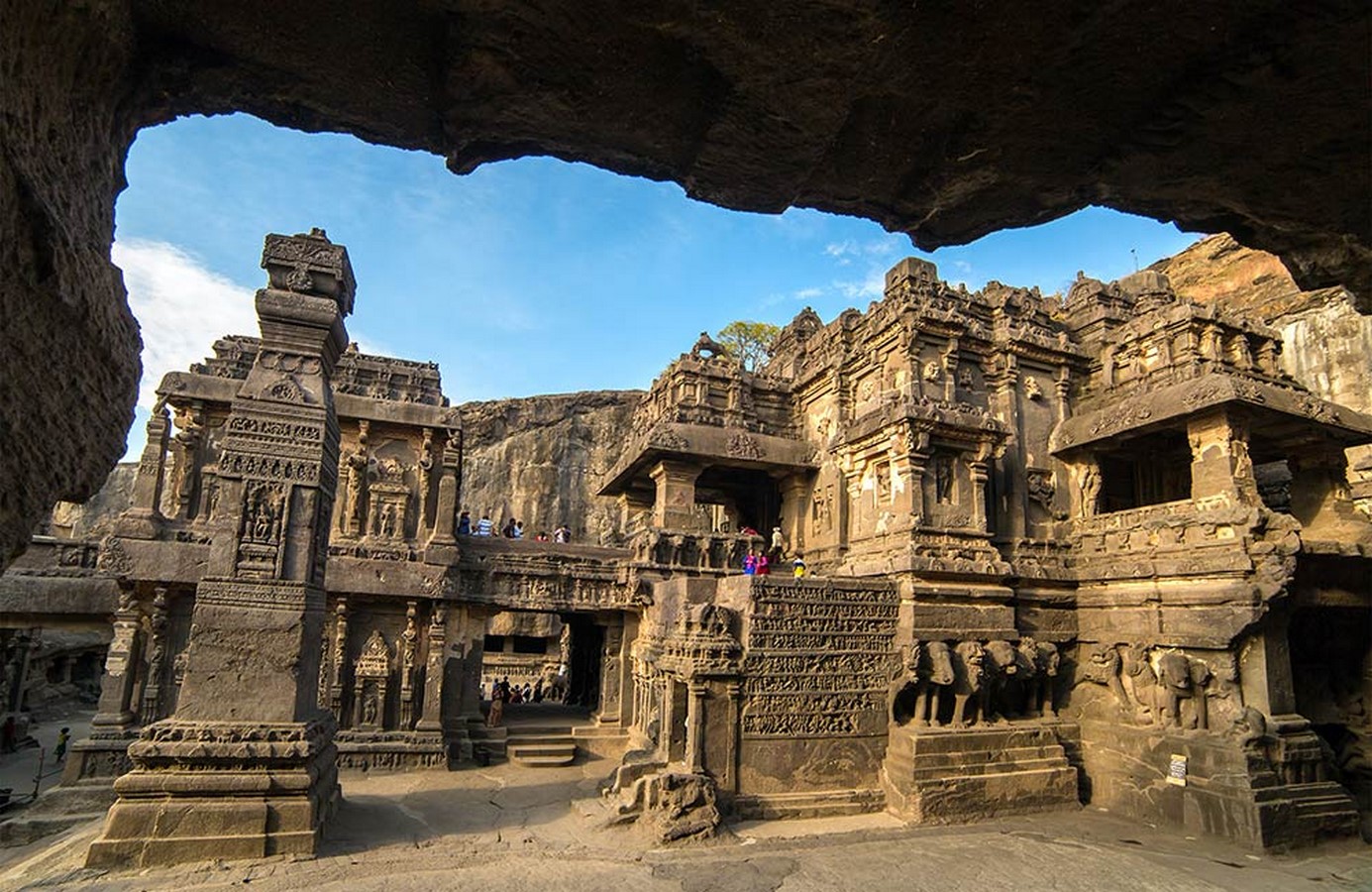
The importance of these caves lies in the fact that they make us aware of the lives of people in those times which eventually lead to the evolution of the lifestyle which we live today. It includes 12 Buddhist caves [1-12], 17 Hindu caves [13-29], and 5 Jain caves [30-34]. These caves were constructed during different eras, with Hindu and Buddhist monuments being constructed in Rashtrakuta Dynasty while the Jain caves were put up in Yadava Dynasty. The most prominent one is Cave 16, housing the 32 m high Kailash temple is the largest single rock excavation in the whole world. The Ellora Complex is a narrative of the spirit of religious tolerance towards different faiths that prevailed at that time and how beautiful the coexistence of faith was at that time.
6. Red Fort Complex, Delhi
Style: Persian, Indian, and Timurid styles of Architecture
Material: Red Sandstone
Location: Netaji Subhash Marg, Lal Qila, Chandni Chowk, New Delhi
Best Time to Visit: October to March
Listed in: 2007
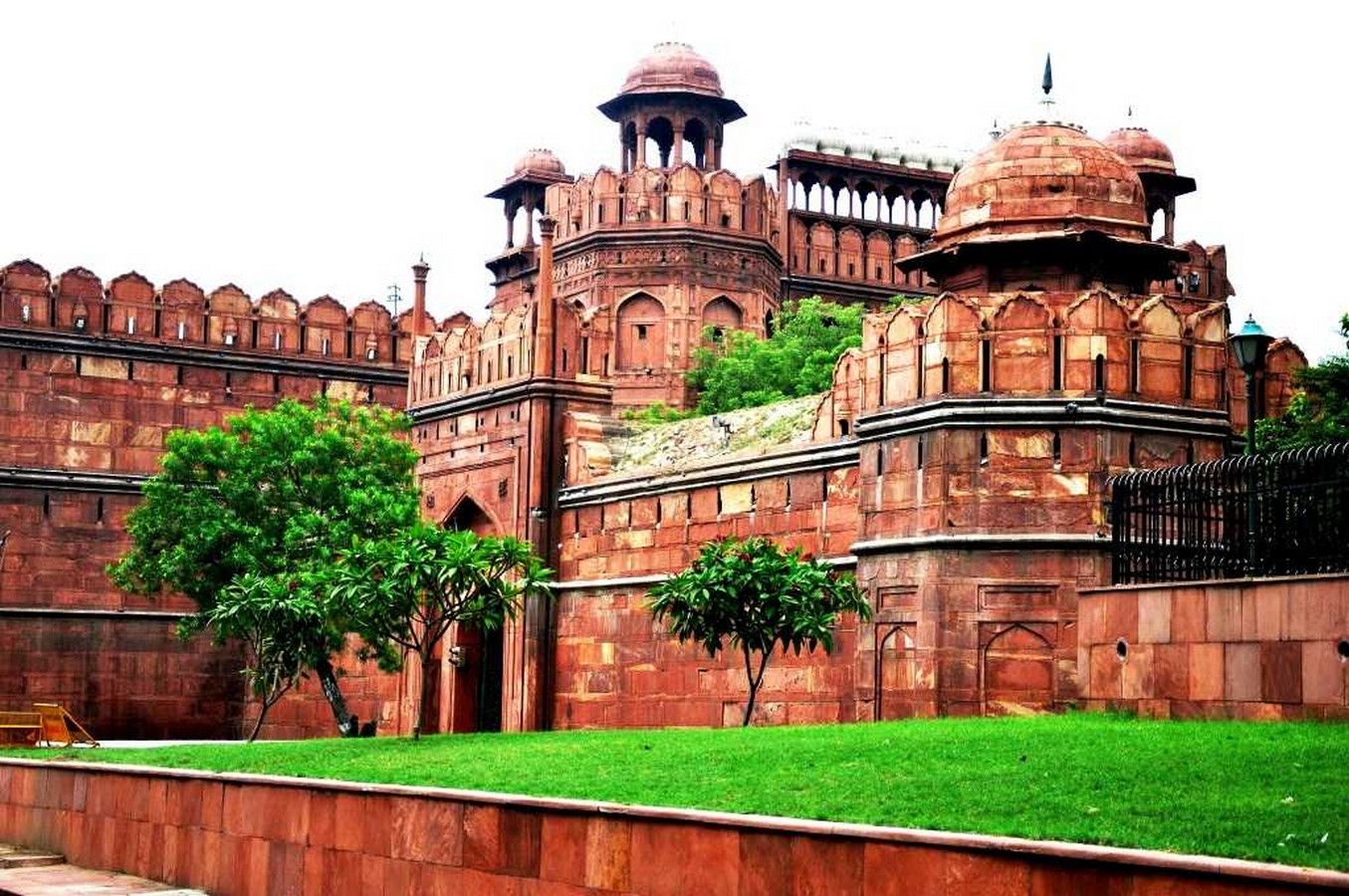
Situated in the historically rich city of New Delhi, the Red fort was declared a UNESCO World Heritage Site in 2007 and is managed by ASI. The Red Fort complex consists of many small buildings namely Diwan-i-Aam, Diwan-i-Khas, Delhi Gate, Lahori Gate, and private pavilions.
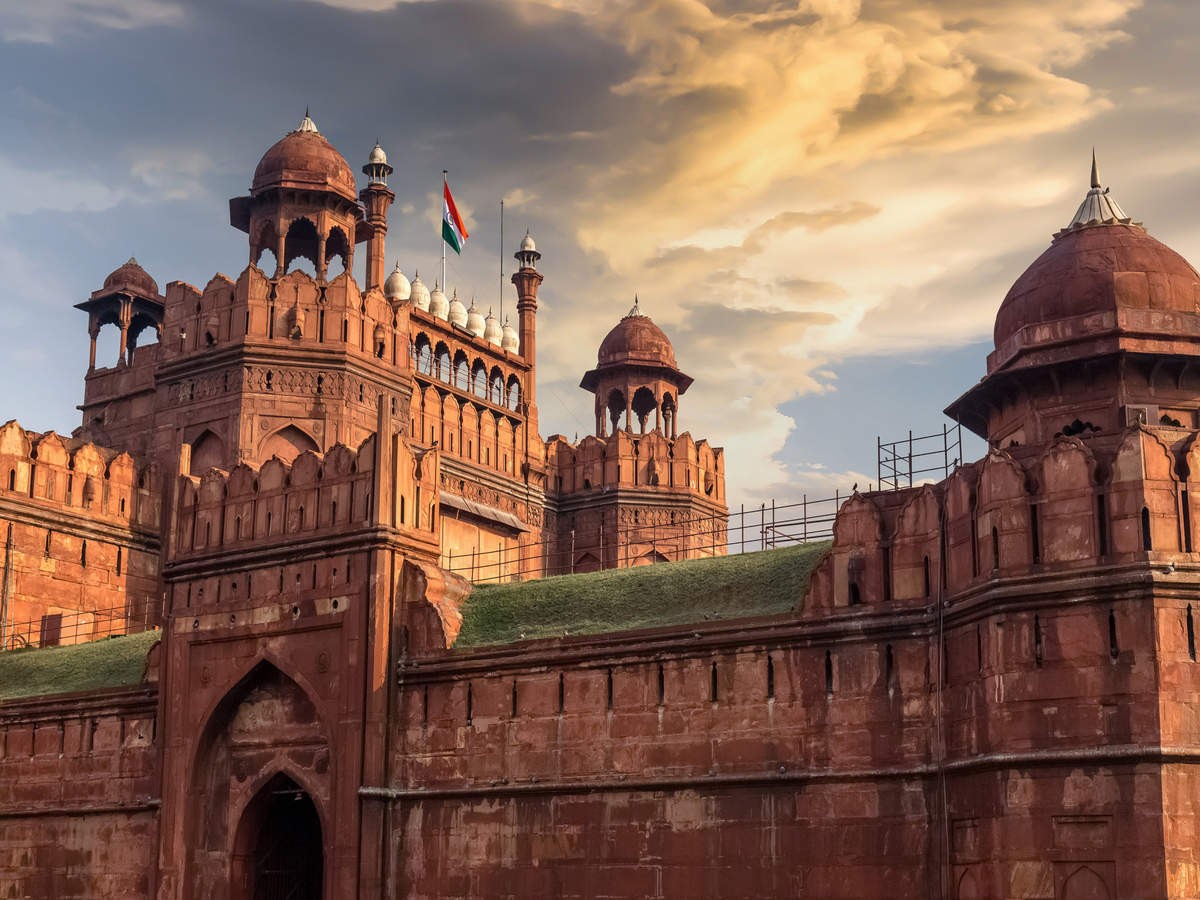
It was built by Shah Jahan on the pretext of changing his capital from Agra to Delhi (The ‘then’ Shahjahanabad). Being the political locus, it became the major hub of Mughal Emperors. In recent times, Independence Day is celebrated every year at Red Fort. Red Fort is a perfect example of the fact that Mughal Art and Architecture saw their prime during Shahjahan’s reign. The way he played with varied material palettes majorly including Red Sandstone. The beautiful blend of Indo-Islamic, Timurid, Hindu, and Persian forms of Architecture accentuates the various parts of this structure, in and out.
7. Sanchi, Madhya Pradesh
Style: Mauryan Architecture
Material: Bricks
Location: Sanchi town, Raisen district, Madhya Pradesh
Best Time to Visit: November to March
Listed in: 1989
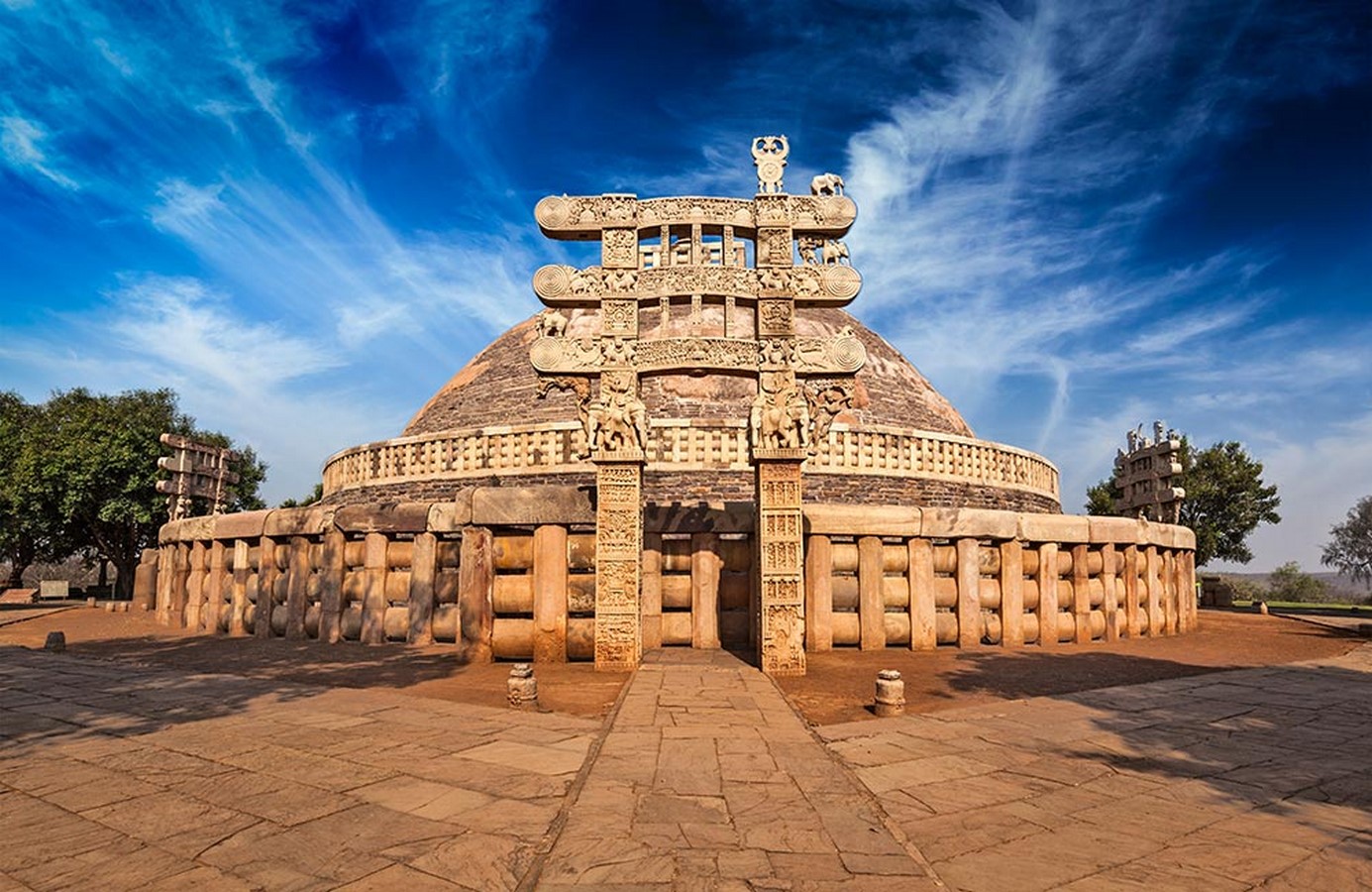
One of the oldest stone structures in India, the Sanchi Stupa located 46-kilometer northeast of Bhopal was built by Mauryan Emperor Ashoka in the 3rd century BCE. It is believed to house the remains of Lord Buddha and therefore is an architectural marvel of our Indian subcontinent. The collection of Buddhist monuments at Sanchi in Madhya Pradesh includes monolithic pillars, temples, palaces, monasteries, and the core i.e. Sanchi Stupa. Holding a universal value, the stupa was renovated during the Satavahana Period after being vandalized during the 2nd century. The work mainly included the restricting and coloring of gateways and balustrades.
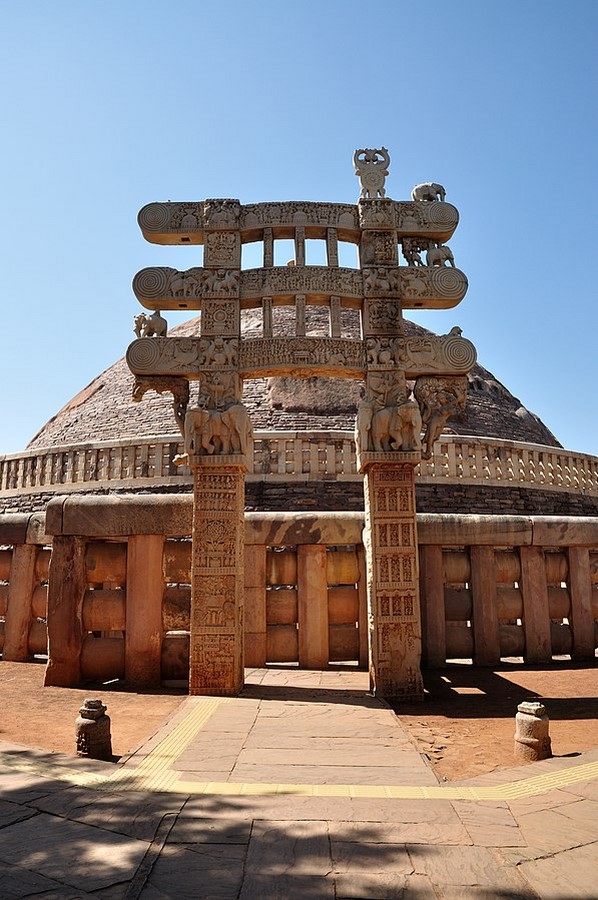
The monuments are widely known as the ‘Manifestation of Heritage of India’. It is a hemispherical-shaped brick structure with Buddha relics as its core; crowned by Chatra symbolizing its rank. The walls of Sanchi and other existing monuments behold exquisite Mauryan architecture-like engravings on walls, pillars, and torans which is such a beautiful sight meant to be seen at least once in a lifetime.
8. Humayun’s Tomb, New Delhi | World Heritage Sites in India
Style: Persian & Islamic Architecture
Material: Dressed stone clad in red sandstone with white and black inlaid marble borders
Location: Mathura Road, Opposite Hazrat Nizamuddin Dargah, New Delhi
Best Time to Visit: October to March
Listed in: 1993
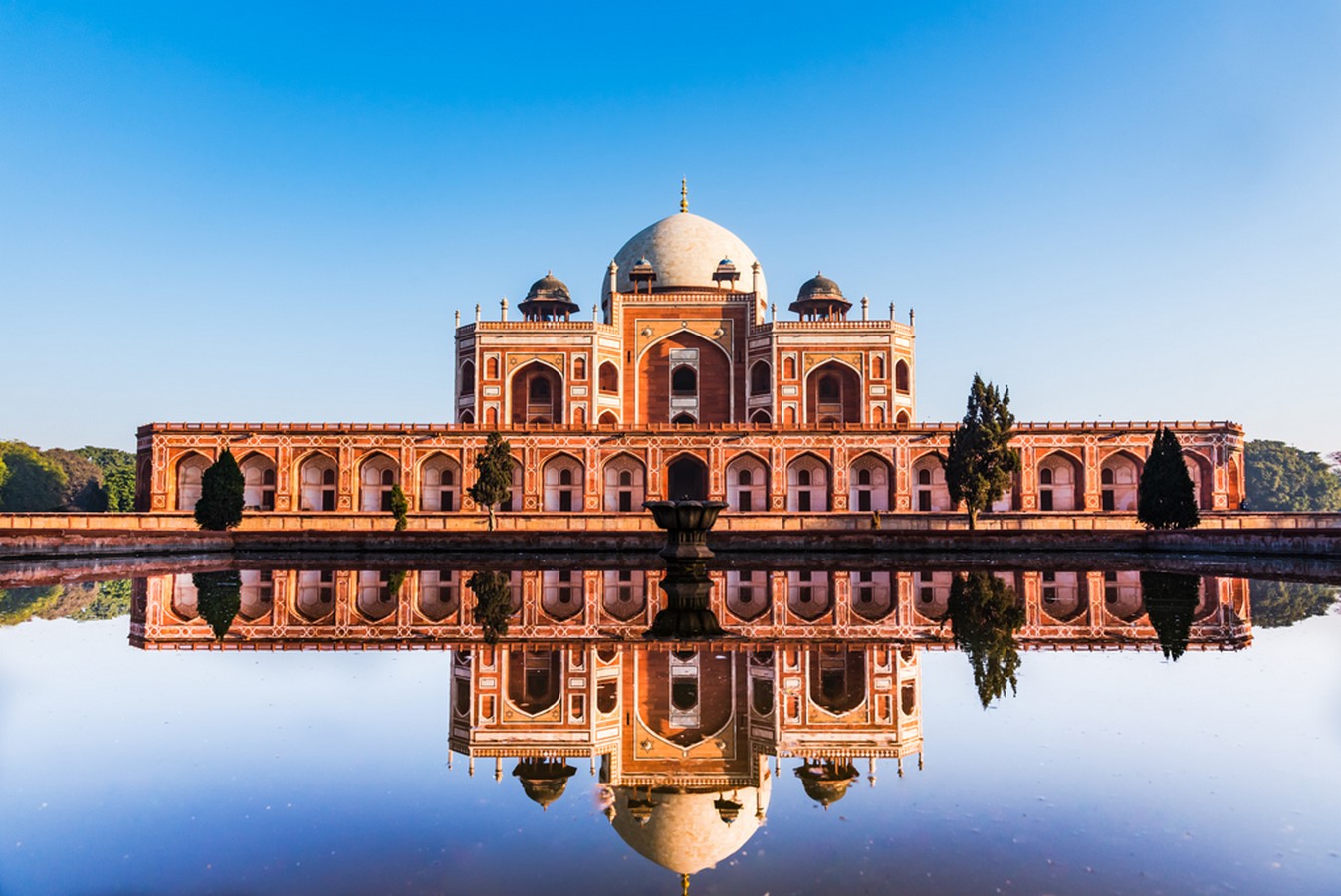
Built by Empress Bega Begum, the wife of Emperor Humayun in the 16th century, Humayun’s Tomb is a memorial to his husband. This mausoleum was added to the list of UNESCO World Heritage Sites in India in 1993 on account of it being the first garden tomb in our Indian Subcontinent. It is counted among the finest and best-preserved monuments of the Mughal period. It has gone through many restorations overtime to salvage its wreckage.
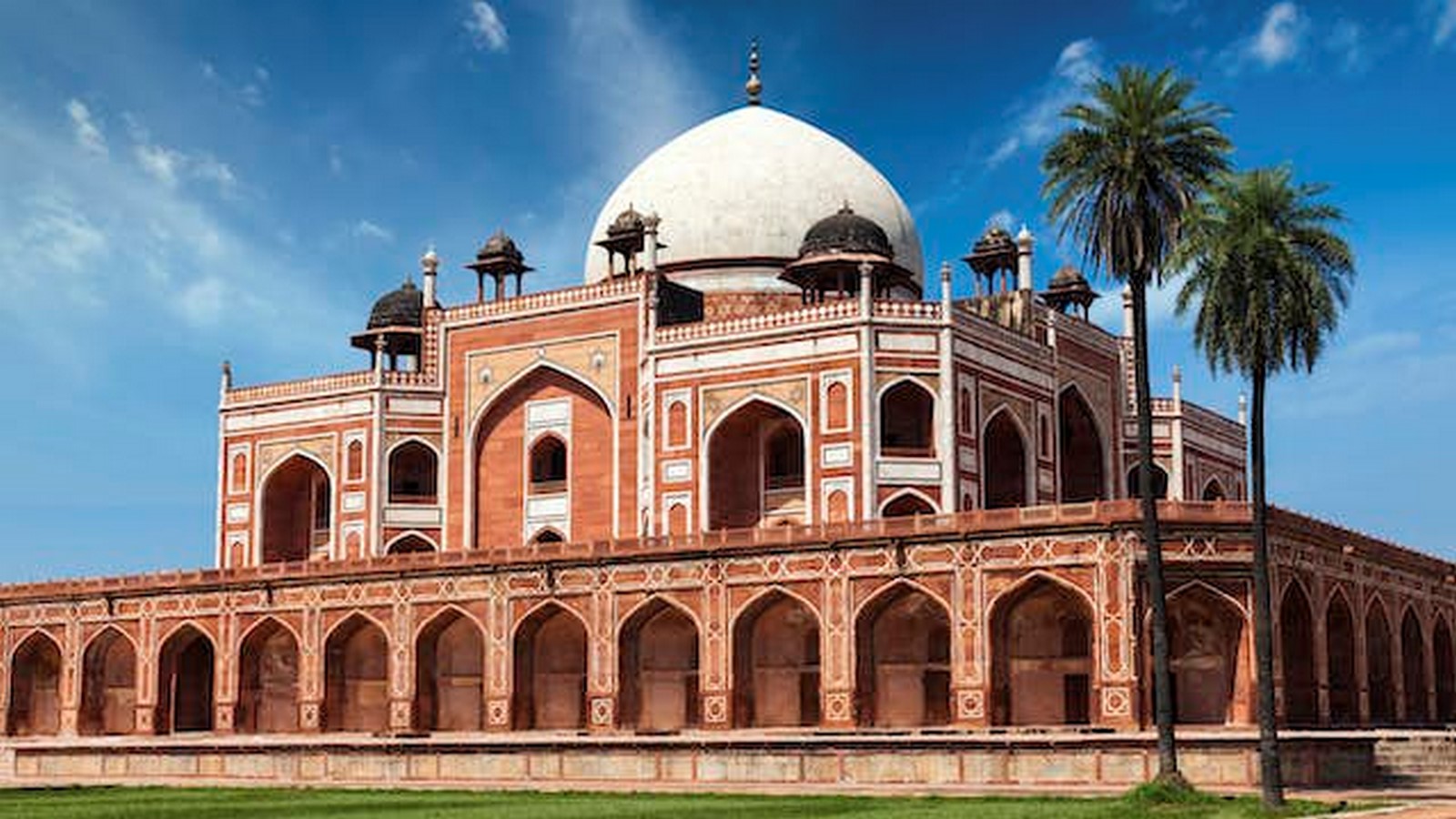
The complex houses many royal graves such as the graves of Empress Bega Begum, Hamida Begum, Dara Shikoh (Emperor Shah Jahan’s son), Isa Khan Niyazi, and many other Mughals along with the main tomb of Emperor Humayun which adds up to 150 in numbers. The most prominent sights are the beautiful Persian-style gardens, the two-storeyed mausoleum on a huge platform, and the many elements of Persian architecture. The structure is one of its kind with its beauty and intricate details.
9. Qutub Minar and its Monuments, New Delhi
Style: Islamic Architecture
Material: Red Sandstone and Marble
Location: Seth Sarai, Mehrauli, New Delhi
Best Time to Visit: October to March
Listed in: 1993
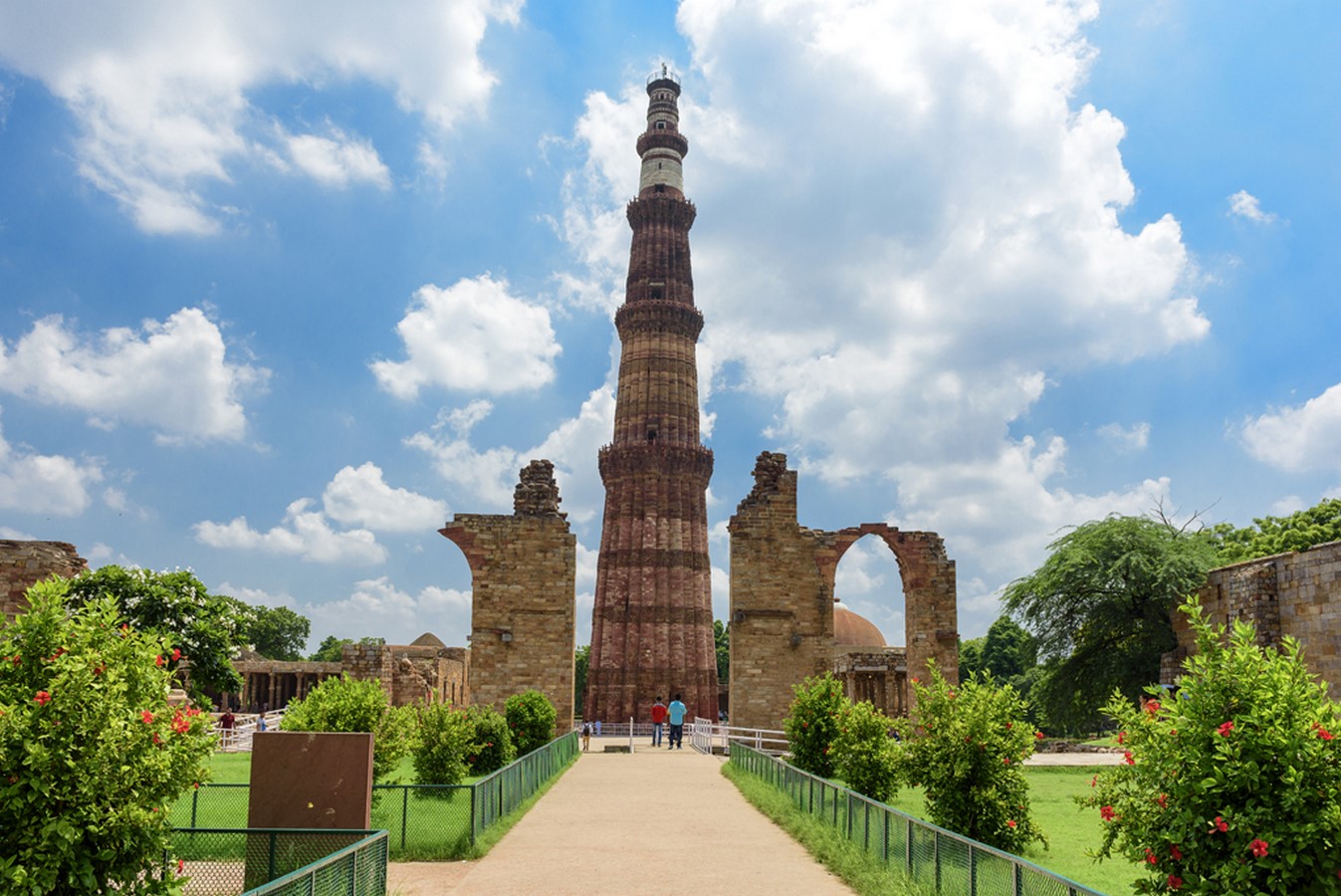
Built in the 13th century, the Qutub complex was enlisted as UNESCO World Heritage Site in India in 1993. It was built by Qutub-ud-din Aibak of the Mamluk Dynasty, the first Muslim ruler of Delhi, to commemorate his win against Delhi’s last Hindu Kingdom. The complex houses Quwwat ul-Islam Mosque, Alai Darwaza Gate, Iron Pillar, Alai Minar, the tombs of Iltutmish, Imam Zamin, and Ala-ud-din Khilji, along with the infamous Qutub Minar.
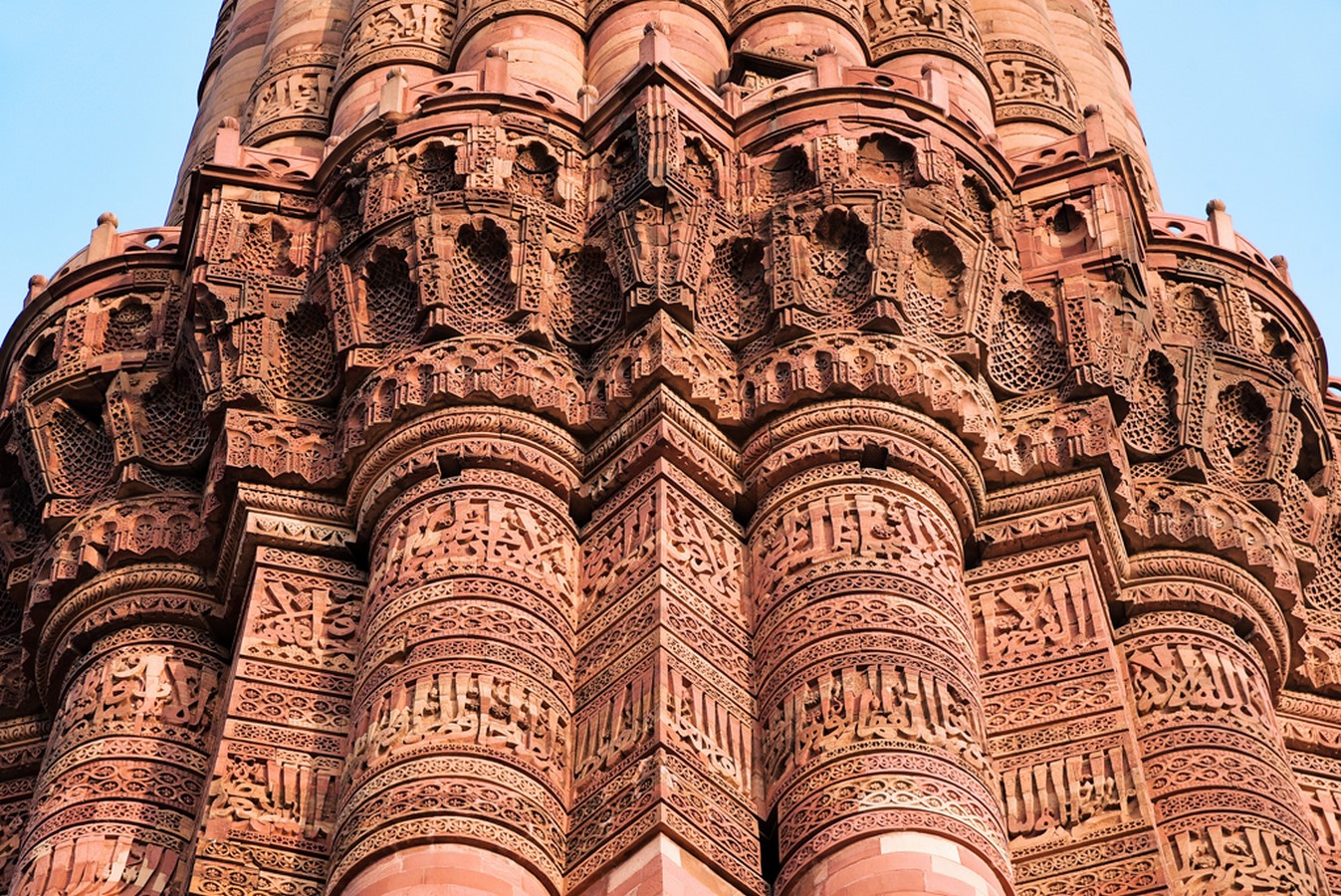
Qutub Minar stands out among the rest on account of its height, the tallest minaret in the world, which is 73 meters from the ground level with a diameter of 15 m at the base lowering to 2.5 meters at the top. The sole reason for this minar was to honor the famous Sufi saint Qutbuddin Bakhtiar Kaki as intended by Aibak. It is one of the earliest precedents of Islamic Architecture in India. The construction is beautiful with its designs, inscriptions, and carvings on red sandstone and marble surfaces.
10. Chhatrapati Shivaji Terminus, Maharashtra | World Heritage Sites in India
Style: Gothic Architecture
Material: Sandstone, Italian Marble, and Limestone
Location: Chhatrapati Shivaji Terminus Area, Mumbai, Maharashtra
Best Time to Visit: October to March
Listed in: 2004
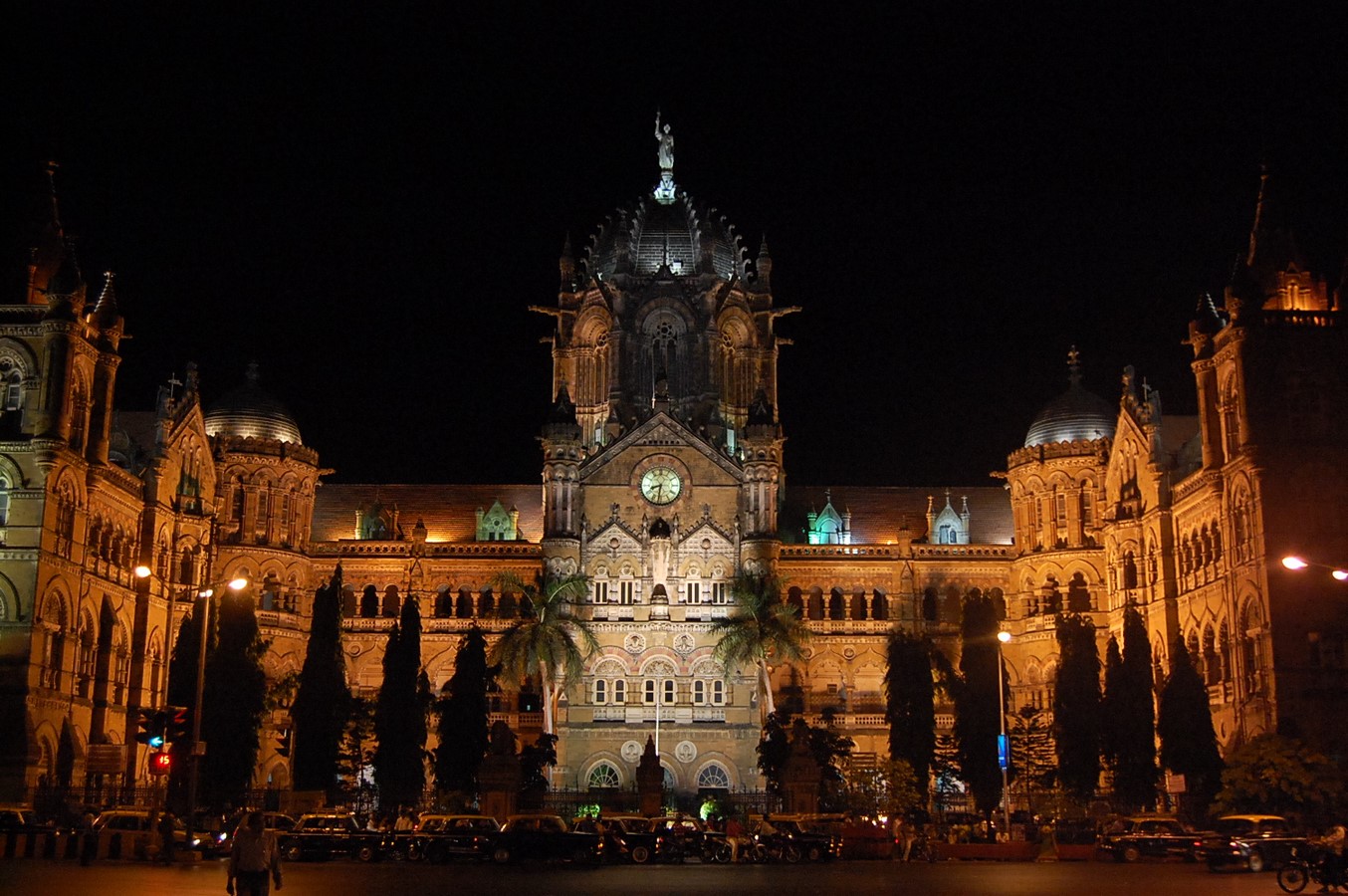
Formerly known as Victoria Terminus, Chhatrapati Shivaji Terminus (CST) is the headquarters of Central Railway in Mumbai. Built by British Architect named Frederick William Stevens in 1887, it’s a historic terminal train station. CST is one of the prominent examples of Victorian Gothic architecture in the Indian subcontinent and was named so in honor of Queen Victoria which was later changed to Chhatrapati Shivaji Terminus. It is a structure that is made by inspiration from Victorian Italianate Gothic Revival architecture and traditional Mughal buildings.

Although the plan of CST shows Italian and Victorian elements the overall concept reminds us of the Palace-style architecture of India. It is an example of a good blend of western and native styles of architecture. It consists of 18 railway lines and the headquarters which makes it a prominent station in India.
India has a plethora of UNESCO-listed heritage buildings that are a must-watch. Indian subcontinent houses such beautiful and rich architecture which is second to none in terms of its unrivaled beauty.
Reference List
Citations for websites:
Precious Kamei. List of UNESCO World Heritage Sites in India that are culturally and architecturally important
Available at https://www.outlookindia.com/outlooktraveller/see/story/68932/unesco-world-heritage-sites-in-india-culture-and-architecture
[16 April, 2019]
40 UNESCO World Heritage Sites in India
Available at https://www.holidify.com/pages/world-heritage-sites-in-india-1629.html
Meenakshi Taheem. 2022 List of UNESCO World Heritage Sites in India
Available at https://www.fabhotels.com/blog/list-of-unesco-world-heritage-sites-in-india/
[June 28, 2022]
Shradha Mehra. 40 UNESCO World Heritage Sites In India
Available at https://www.adotrip.com/blog/world-heritage-sites-in-india








